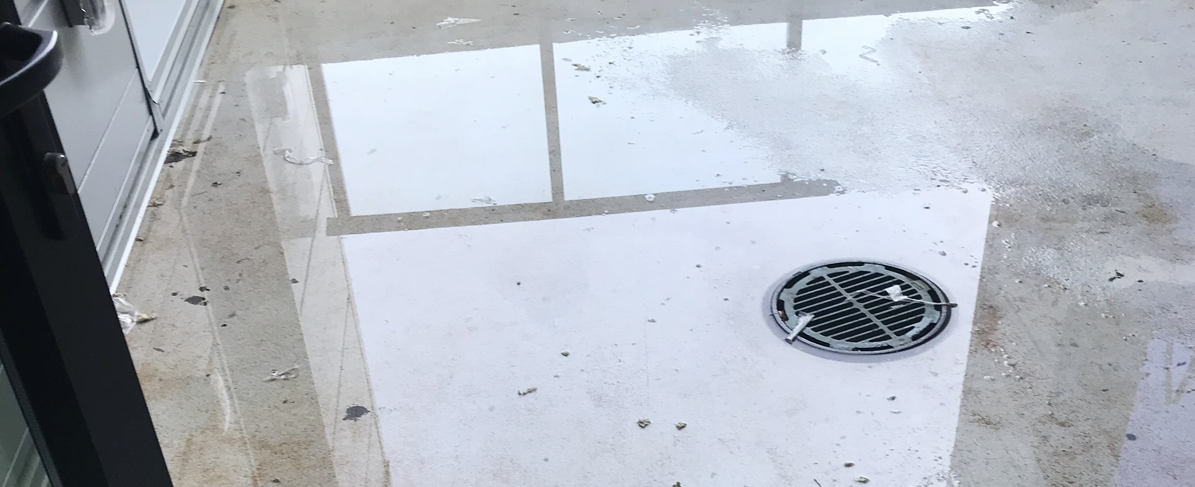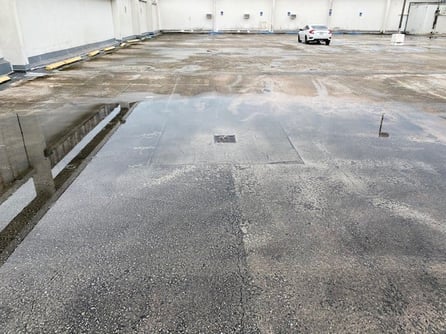Water ponding on concrete surfaces can be a common issue that not only affects the aesthetics of your property but also poses potential risks of damage. Whether it’s your driveway, patio, or any other concrete area, addressing water ponding is crucial to prevent long-term problems. In this guide, we will explore effective solutions to fix water ponding on concrete and ensure proper drainage.
Identifying the Problem
The first step in fixing water ponding on concrete is to identify the root cause of the issue. Water ponding can occur due to various reasons such as improper slope, cracks in the concrete, or inadequate drainage. By understanding the cause, you can implement targeted solutions to address the problem effectively.

Credit: blog.buildmeetsworld.com
Effective Solutions
1. Adjusting The Slope
One of the most common reasons for water ponding on concrete is an inadequate slope that prevents proper water drainage. To fix this issue, you can adjust the slope of the concrete surface to ensure that water flows away from the area. This can be done by adding a slight slope using specialized tools or seeking professional help to regrade the surface.
2. Filling Cracks And Gaps
Cracks and gaps in the concrete can contribute to water ponding as they create areas where water can accumulate. By filling these cracks with concrete sealant or epoxy, you can prevent water from seeping into the surface and causing ponding issues. Regularly inspecting the concrete for cracks and addressing them promptly is essential to maintain the integrity of the surface.
3. Installing Drainage Systems
If the water ponding issue persists despite adjusting the slope and filling cracks, installing a drainage system can be an effective solution. French drains, trench drains, or surface drains can help redirect water away from the concrete surface, preventing ponding and water damage. Consulting with a professional contractor can help you determine the most suitable drainage system for your specific needs.
4. Resurfacing The Concrete
If the concrete surface is severely damaged or uneven, resurfacing the area can provide a long-lasting solution to water ponding issues. Concrete resurfacing involves applying a new layer of concrete over the existing surface, creating a smooth and level finish that promotes proper water drainage. This not only fixes the ponding problem but also enhances the appearance of the concrete.
5. Using Permeable Pavers
Another effective solution to fix water ponding on concrete is to use permeable pavers. These pavers are designed to allow water to seep through the surface and into the ground, preventing water accumulation and ponding. By replacing traditional concrete with permeable pavers, you can improve water drainage and reduce the risk of ponding issues.
Maintenance Tips
Once you have fixed the water ponding issue on your concrete surface, it is essential to implement regular maintenance to prevent future problems. Here are some maintenance tips to keep your concrete in top condition:
- Regularly inspect the concrete for cracks, damage, or signs of ponding.
- Clean the concrete surface regularly to remove debris and prevent clogs in drainage systems.
- Ensure proper drainage by keeping gutters and downspouts clear of debris and obstructions.
- Monitor the slope of the concrete surface and make adjustments as needed to promote water drainage.
- Consider applying a waterproof sealant to protect the concrete from water damage and prolong its lifespan.

Credit: m.youtube.com
Conclusion
Water ponding on concrete can be a frustrating issue, but with the right solutions and maintenance practices, you can effectively fix the problem and prevent future damage. By identifying the root cause of the ponding, implementing targeted solutions such as adjusting the slope, filling cracks, installing drainage systems, or using permeable pavers, you can ensure proper water drainage and protect your concrete surfaces. Remember to stay proactive with maintenance to keep your concrete in optimal condition and avoid water ponding issues in the future.


